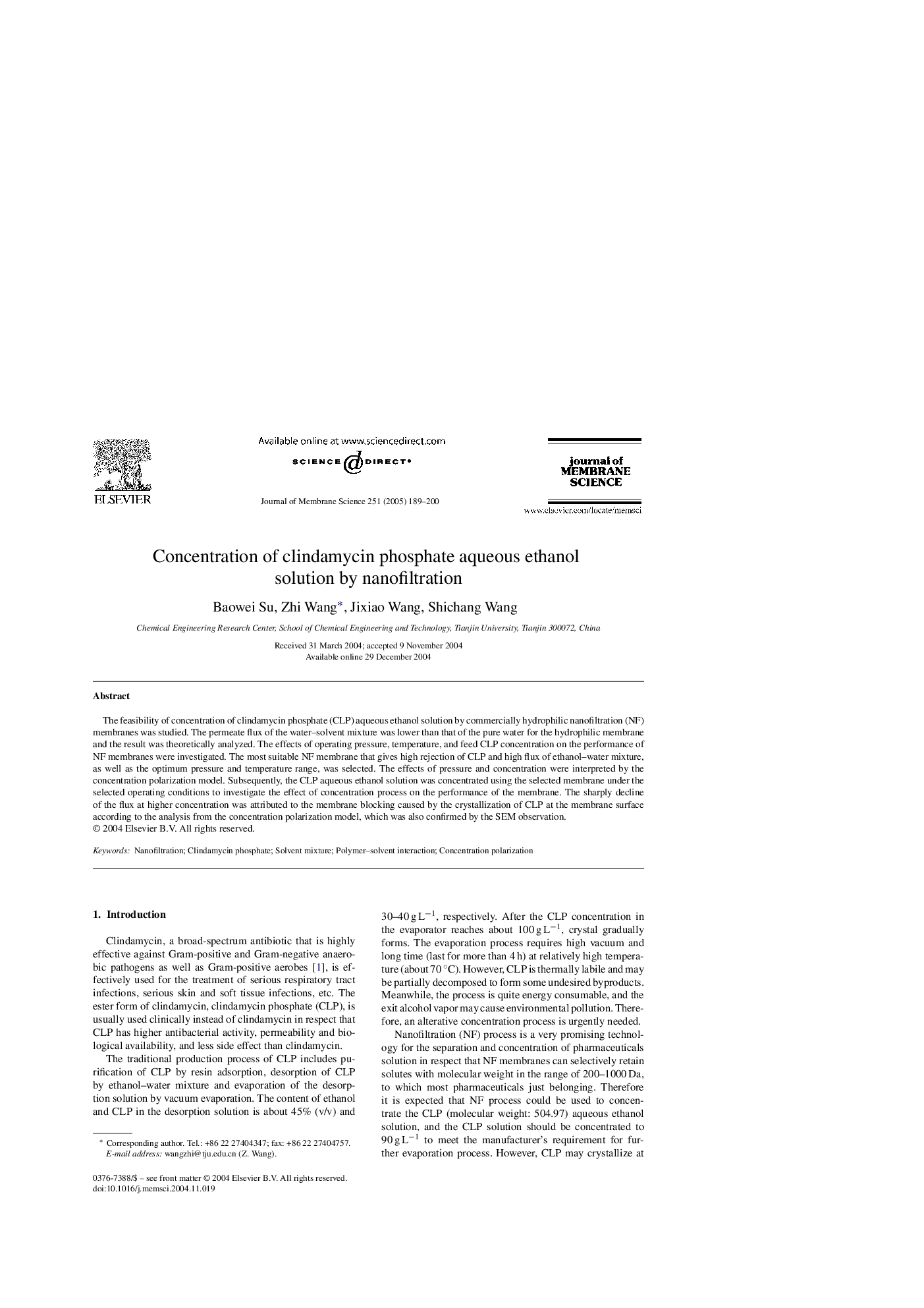| Article ID | Journal | Published Year | Pages | File Type |
|---|---|---|---|---|
| 9684981 | Journal of Membrane Science | 2005 | 12 Pages |
Abstract
The feasibility of concentration of clindamycin phosphate (CLP) aqueous ethanol solution by commercially hydrophilic nanofiltration (NF) membranes was studied. The permeate flux of the water-solvent mixture was lower than that of the pure water for the hydrophilic membrane and the result was theoretically analyzed. The effects of operating pressure, temperature, and feed CLP concentration on the performance of NF membranes were investigated. The most suitable NF membrane that gives high rejection of CLP and high flux of ethanol-water mixture, as well as the optimum pressure and temperature range, was selected. The effects of pressure and concentration were interpreted by the concentration polarization model. Subsequently, the CLP aqueous ethanol solution was concentrated using the selected membrane under the selected operating conditions to investigate the effect of concentration process on the performance of the membrane. The sharply decline of the flux at higher concentration was attributed to the membrane blocking caused by the crystallization of CLP at the membrane surface according to the analysis from the concentration polarization model, which was also confirmed by the SEM observation.
Related Topics
Physical Sciences and Engineering
Chemical Engineering
Filtration and Separation
Authors
Baowei Su, Zhi Wang, Jixiao Wang, Shichang Wang,
